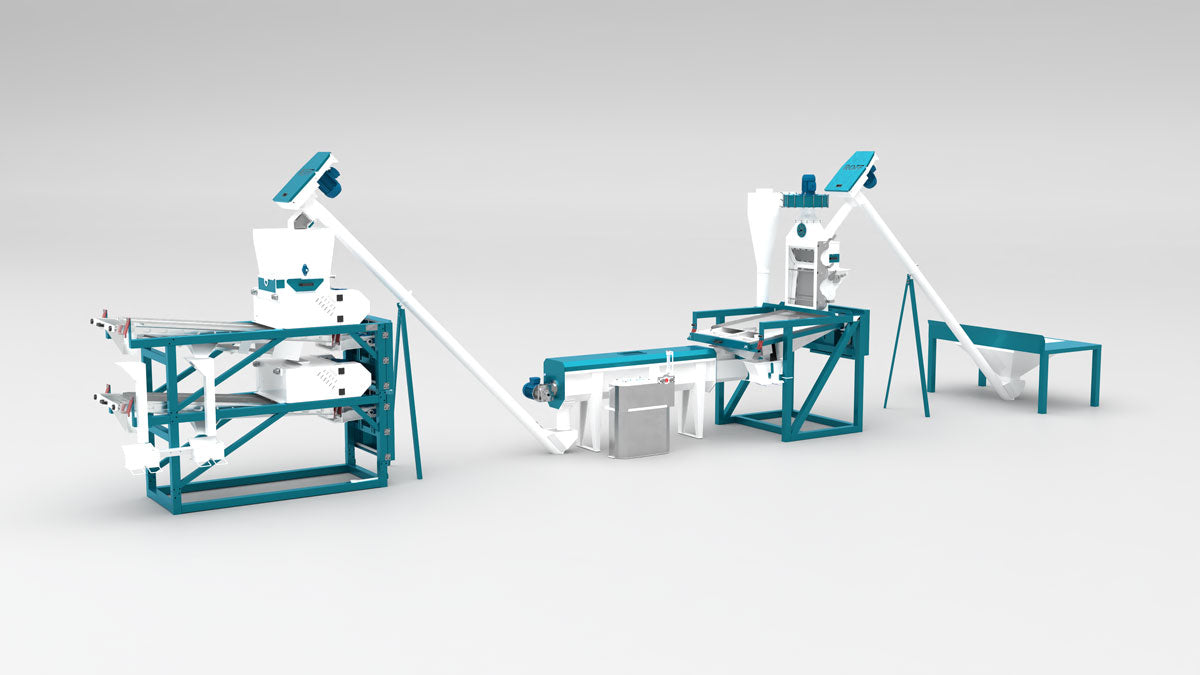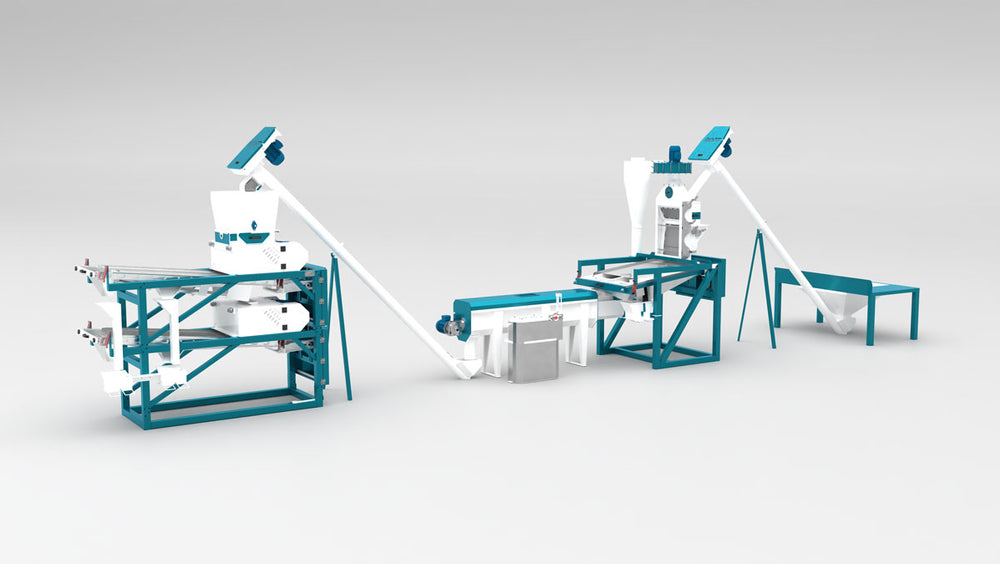The best way to successfully store grain such as maize, wheat and sorghum long-term, is effective and consistent temperature, moisture content and carbon dioxide (CO₂) monitoring.
This blog provides an overview on grain storage. But first things first: why is long-term grain storage so important?

WHY STORE GRAIN LONG-TERM?
Storing grain effectively is pivotal in ensuring consistent maize supply and therefore avoiding major price fluctuations. The following play a role:
- Buy low, sell high. All crops go through high and low price cycles, for example, the price would be at its highest just before harvest season begins, and then drop down due to the increased supply during and after harvesting.
- Shortages in specific areas caused by failed crops. Due to the impacts of high rainfall, drought or agricultural pest infestation like Queleas (birds), rodents like gerbils, and of course, locusts. In instances like these, having access to stored grain is crucial to meet demand and avoid dramatic price fluctuations in the market.
- Surplus production. Surplus grain volumes should be stored in case of a shortage in subsequent seasons. Stored grain like maize can be exported to impacted markets where prices will be higher as demand outstrips supply.
EXAMPLE:
SA processes 940 000 tons of maize per month (both white and yellow maize). So, at the end of the marketing season, when stocks are at their lowest, at least 1,4 million tons of maize must be available (940 000 x 1,5). This is called the pipeline stock.
If the estimated amount of maize at the end of the season is less than 1,4 million tons, it will likely lead to shortages in the market. If the market has more than 1,4 million tons available, the stock is sufficient and the market should not be too price sensitive.

STORING GRAIN EFFECTIVELY
1. Storage and storage facilities
Grains can typically be stored:
- On an open shed floor under roof in bags;
- Outside under a tarpaulin, or silo bags;
- In a container; or
- In a sophisticated concrete or steel silo equipped with air circulation fans.
Regardless of the method of storage, the moisture content and CO₂ levels of the grain, prevailing ambient temperature and level of humidity in the surrounding air are key elements that should be monitored. Aeration with ambient air is the most common method used to manage these.
Stored grains are alive and although they go through a period of dormancy, will start to germinate when rewetted by rain or by absorbing moisture from the air when the humidity is over 70%.
The complexities of stored grain ecosystems make effective monitoring and optimal management challenging, especially as storage bins become larger. Temperature and relative humidity sensors installed on cables and placed in the stored grain mass are used to track grain mass temperature and moisture content.
Carbon dioxide sensors can be placed in the plenum and headspace below and above the stored grain to track the onset of spoilage due to biological activity from moulds and insects. Carbon dioxide can also be detected using inexpensive handheld CO2 monitors – either in the headspace of the storage structure or in the exhaust air of a downdraft aeration fan.
The number and placement of sensors and the interpretation of sensor readings is key to effectively monitoring conditions in a stored grain mass and managing optimal windows of aeration based on real-time weather data. Temperature sensors used for stored grain monitoring consist of either thermocouples or thermistors.

2. Storage area preparation
- Storage structures should be cleaned and checked for insects in aeration ducts, under perforated floors, and in handling equipment before filling, and residual grain inside and debris around the facility should be removed.
- An approved residual insecticide should be sprayed on the inside walls and floor of the structure. External wall surfaces up to about 1.80m above the foundation, the foundation including cracks and crevices, and the aeration fan inlets and conveying equipment outlets, should be sprayed well in advance of the warm weather storage period to prevent insects from getting to the grain. Grain protectants are not needed on cold, dry grain carried into the warmer periods of the year except perhaps on the grain mass surface.
- Maize stored in outdoor piles must be closer to 13% moisture content to maintain its shelf life and minimise damage due to mould spoilage and insect damage. Damage levels of maize not managed properly in outdoor piles can easily exceed 30% to 40%.
3. Maintenance of the storage area
Preventative silo and bin maintenance at the storage facility is crucial because problems like arching, ratholing, hot spots and bridging can be identified and addressed before they become major issues. Unfortunately, many silo owners and operators put off doing regular and scheduled maintenance – and by the time a problem arises, it may be costly and take a long time to fix. This also causes costly downtime.
HOW LONG CAN GRAIN BE STORED?
The table below shows the allowable storage time (AST) of corn (maize) and soybeans in months as a function of temperature and moisture content. For successful long-term storage, AST needs to be understood and respected, especially when the initial grain quality is lower than normal.
Table 1: Estimated maximum storage time
Estimated maximum storage time in months for corn based on grain temperature and moisture content
| Grain moisture content | ||||||
| Grain temperature | 13% | 14% | 15% | 16% | 17% | 18% |
| 40ºF (5ºC) | 150 | 61 | 29 | 15 | 9.4 | 6.1 |
| 50ºF (10ºC) | 84 | 34 | 16 | 8.9 | 5.3 | 3.4 |
| 60ºF (15ºC) | 47 | 19 | 9.2 | 5.0 | 3.0 | 1.9 |
| 70ºF (20ºC) | 26 | 11 | 5.2 | 2.8 | 1.7 | 1.1 |
| 80ºF (25ºC) | 15 | 6 | 2.9 | 1.6 | 0.9 | 0.9 |
Recommendations are based on a 0.5% maximum dry matter loss. Longer storage periods will result in higher dry matter loss, greater damage levels, and decrease in grain grade. Source: Iowa Grain Quality Initiative
Resources:
https://www.world-grain.com/articles/11331-grain-operations-managing-stored-grain-long-term https://sagrainmag.co.za/wp-content/uploads/2021/12/Graangids-2022_ENG-WEB.pdf https://www.grainsa.co.za/different-ways-and-options-for-storing-grain











5 comments
Can you Company Delivery White Maize Non GMO For Export.
WhatsApp 00491601508738
All American Funding INC Germany
Lothar Flad
———
Roff Milling replied:
Hello Lothar, Roff is a maize mill manufacturer, we do not supply maize itself. Regards
When I asked for sp1 quotation they gave me
They gave me quotation stating with UD120000 but here Metion sp1 strting with UD42000 stating what is the difference
———
Roff Milling replied:
There are many different configurations of the Sp-1 pending on quality and fineness that you want to produce. The most basic option will not provide the fine flour needed for Uganda.
Thanks for information am in uganda but enjoy your teaching am looking for money to buy your mill plant
Am a grain farmer
Good day, I would like a quote for 1000kg maize
———
Roff Milling replied:
Hello Themba, one of our consultants will get in touch soon. Regards
Very informative, will continue to read more about ensuring grain quality and Roff equipment. Am working hard to make sure i also own a Roff milling machine at least starting with 1TPD or community milling in the near future in Uganda Masindi. Thank you.